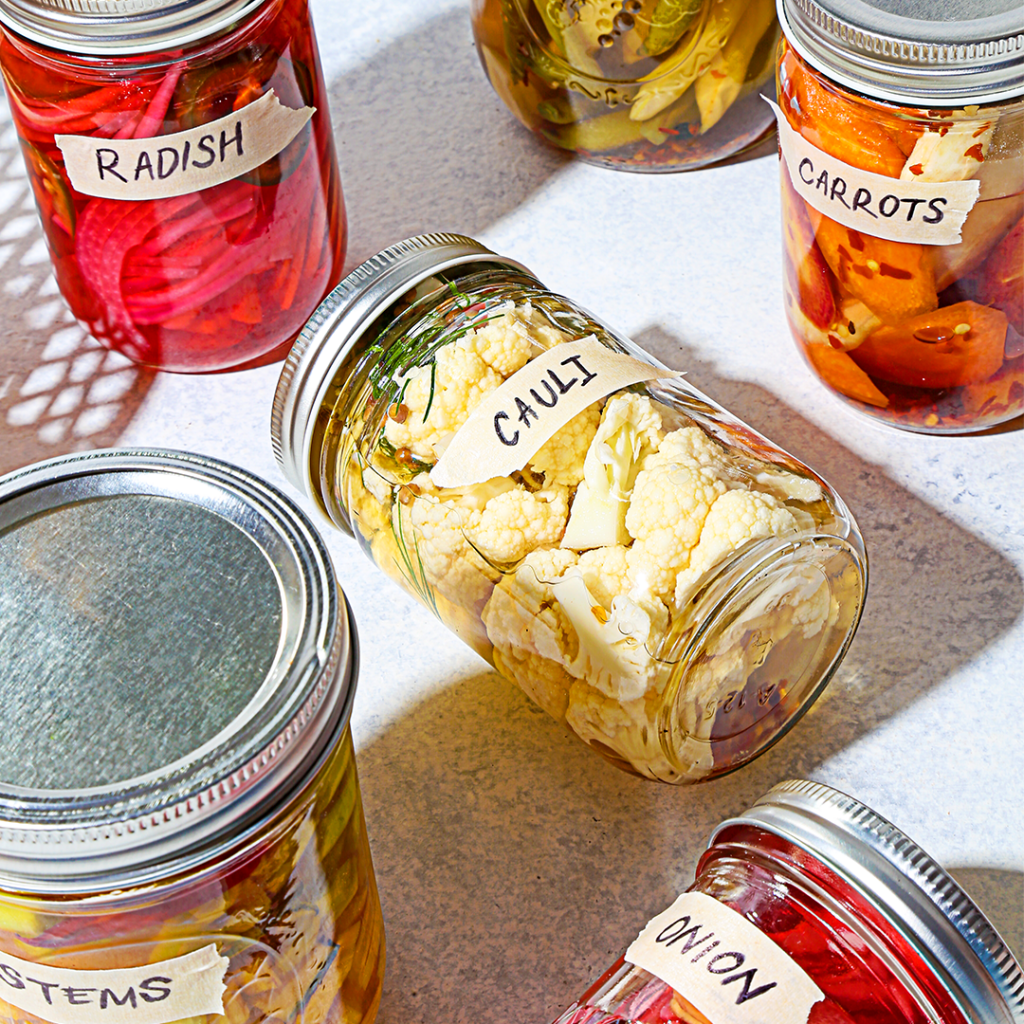
If you’re like us, you may struggle to eat up all of your organic veggies before those items go past their peak. But there’s a great way to use up that leftover half a lemon or the green tops from your carrots. Pickling! And we’re not just talking cucumbers and onions. You can make everything from tomatoes to green beans last even longer with this classic preservation method.
To start, you’ll need a few basic tools:
- Quart-sized mason jars
- Medium-sized pot
- Chef’s knife and/or vegetable peeler
Your most basic pickle brine will always include:
- Vinegar such as white, apple cider, or rice vinegar (just don’t use balsamic or malt vinegars)
- Water
- Sugar
- Salt
And that’s it! It’s common to add other ingredients like dried herbs spices: whole peppercorns, dried chili peppers, mustard seeds, juniper berries, fennel seeds, and/or whole coriander. And you’ll want to add in flavor enhancers like fresh herbs and other flavorings: whole garlic cloves, ginger, dill, and/or thyme.
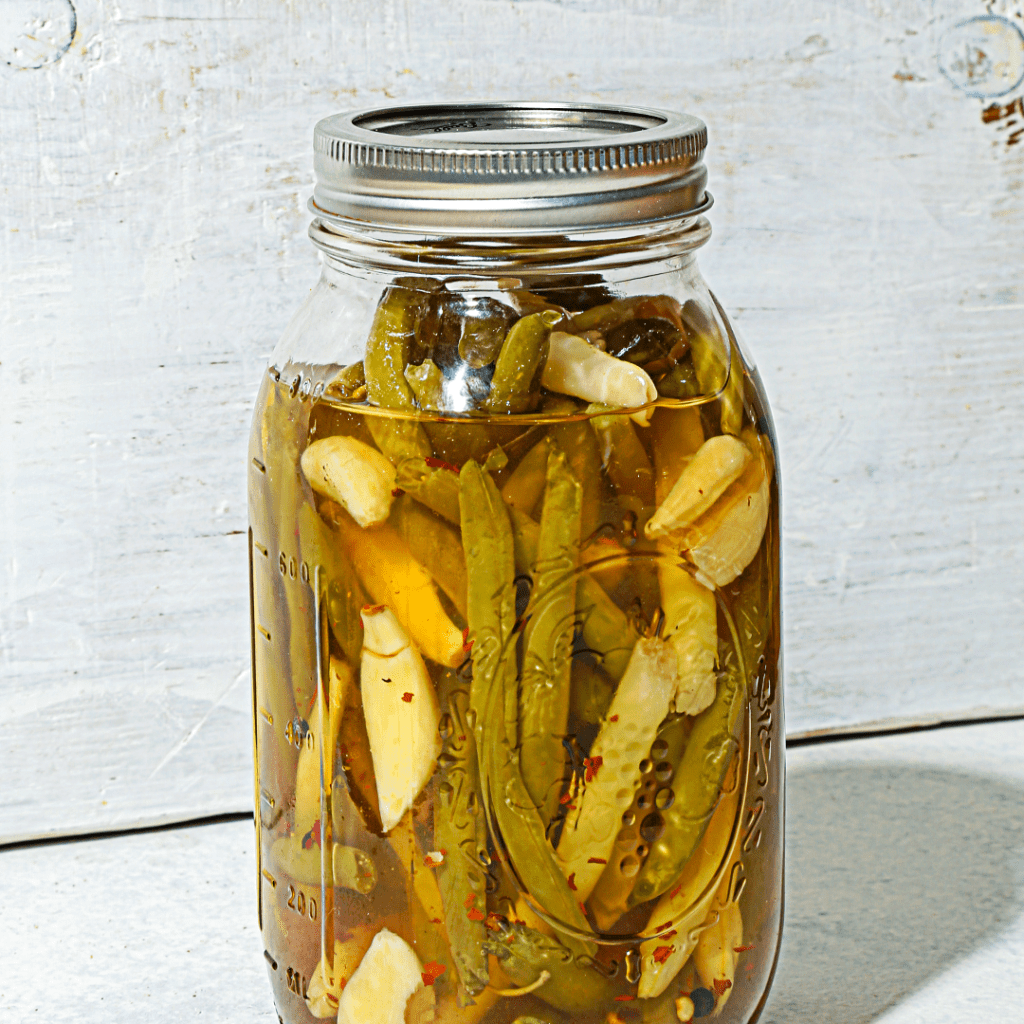
In less than 10 minutes you’ll have jars full of veggies on their way to becoming delicious pickles. The best part? Everything is totally customizable, so you can have fun testing new flavor combinations and spice levels. Then, homemade quick pickles are incredibly versatile. Put pickled veggies on top of hot dogs, on scrambled eggs, in salads (grain and egg salads included), or simply eat them by themselves.
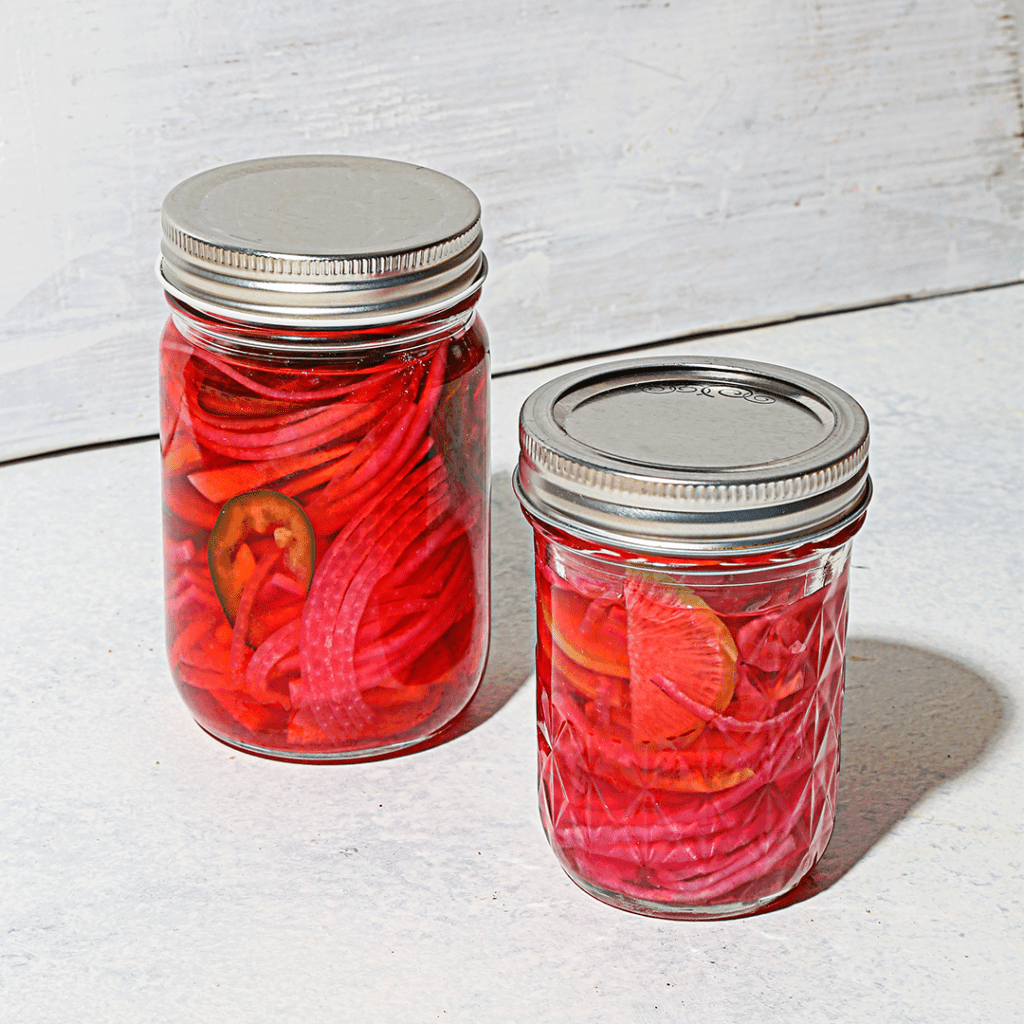
Here are the basic instructions for pickling roughly 1 pound of raw produce:
- Prep your produce, such as carrots, cucumbers, or onions, by removing peels (if necessary), tops, bottoms, and stray roots. Cut into thin, uniform slices. Place cut veggies in mason jars so that there’s a little empty space at the top but do not place the lid on just yet.
- At this point, add other flavors/spices to your mason jars, like fresh herbs and whole herbs and spices.
- Combine 1 cup of vinegar and 1 cup of water with 2 tablespoons sugar and 2 tablespoons salt in a medium-sized pot. Stir until salt and sugar dissolves. On medium-high heat, bring everything to a boil. Remove from heat.
- Pour the vinegar mixture over your veggies so that they’re completely covered by the liquid, leaving roughly 1/2-inch of space at the top of the jar empty. Tap the sides of the jars to remove any air pockets and securely tighten the lids.
- Let cool to room temperature before storing jars in the refrigerator. Now comes the hard part: waiting. It’s best to let your veggies sit in the brine for at least 24 hours before enjoying your newly-pickled vegetables. It’s worth it to let the vinegar-salt-sugar mix brine your veggies really well. Fortunately, pickled veg can last up to a month (or longer, depending on the recipe) in the fridge, so you can snack on your homemade pickled veggies any time you want.
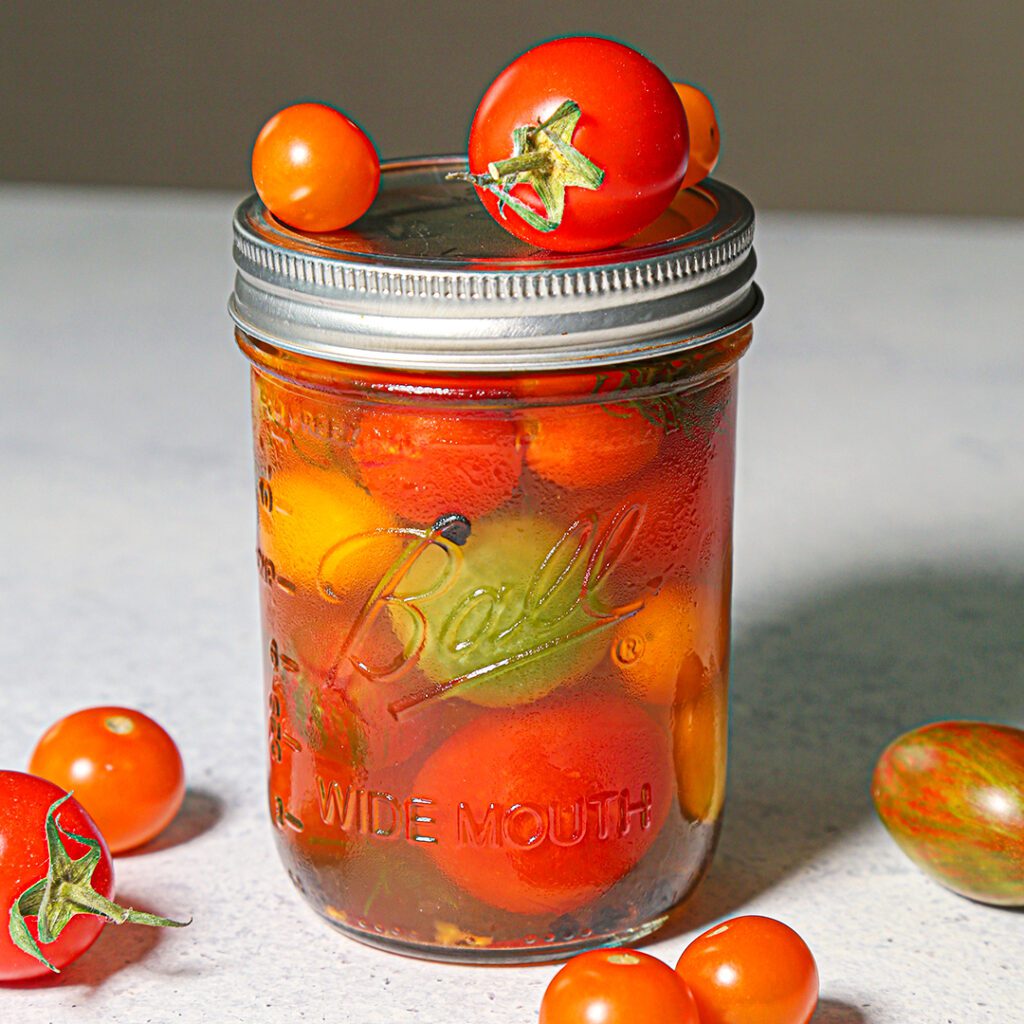
Intrigued? Try quick-pickled rainbow Swiss chard stems or one of our other favorite pickle recipes:
Print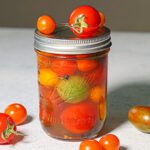
Spicy Pickled Tomatoes and Garlic
Ingredients
- 1 pint cherry tomatoes
- 1 cup apple cider vinegar
- 1 cup water
- 2 tablespoons salt
- 2 tablespoons sugar
- 4 cloves garlic
- 1 tablespoon whole peppercorns
- Fresh dill sprigs
- ½ teaspoon mustard seeds
- ½ teaspoon chili flakes
Instructions
- In a medium-sized pot placed over medium-high heat, dissolve sugar and salt in water and vinegar. Bring to a boil.
- As the vinegar-water mixture heats, thoroughly wash your cherry tomatoes and peel whole garlic cloves. Place tomatoes and garlic in mason jars along with peppercorns, fresh dill, mustard seeds, and chili flakes.
- When vinegar-water mixture has reached a boil, remove from heat and pour over tomatoes and garlic, leaving 1/2-inch of empty space at the top. Tightly seal jars, let cool to room temperature, and store in the fridge for up to one month.
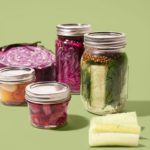
Easy Pickled Cabbage
Ingredients
- 1 small head red cabbage, sliced
- 1 cup apple cider vinegar
- 1 cup water
- 2 tablespoons salt
- 2 tablespoons sugar
- 1 tablespoon whole peppercorns
- 2 cloves garlic, smashed
- 1 dried bay leaf
Instructions
- In a medium-sized pot placed over medium-high heat, dissolve sugar and salt in water and vinegar. Bring to a boil.
- As the vinegar-water mixture heats, thoroughly wash your cabbage and slice it into thin strips.
- Peel and smash whole garlic cloves. Place cabbage and garlic in mason jars along with peppercorns and a bay leaf.
- When vinegar-water mixture reaches a boil, remove from heat and pour over cabbage and garlic, leaving 1/2-inch of empty space at the top. Tightly seal jars, let cool to room temperature, and store in the fridge for up to one month.

Is pickling the same as fermenting?
| Pickling and fermenting are different ways of preserving foods. They do share some similarities, including the resulting sour flavor. Pickling means putting food into an acidic brine, which preserves it while making its flavor more sour and its texture softer. Fermenting, on the other hand, means using yeast or bacteria to convert carbohydrates into alcohol. Like pickling, it often involves brine. However, there are no acidic ingredients in the brine when fermenting. Common fermented foods include sauerkraut, kimchi, miso, beer, cider, and wine. Common pickled foods include cucumbers, peppers, radishes, watermelon, and jalapeños. |

Comments (2)
This is such a neat idea! Would it be possible to use a substitute for sugar like honey, or coconut sugar and it still turn out or does it need to be cane sugar? Also, how to you know how many spices to add? I’m so new at this. I wouldn’t know what or how much of anything!! Thanks!
Hi Laura — Yes! You can substitute in honey and coconut sugar but just a pinch! Although granulated sugar is probably best. When it comes to spices, you can add as much as you’d like! We’d suggest starting off with fewer herbs and spices and adding in more as you adapt your own recipes as home.